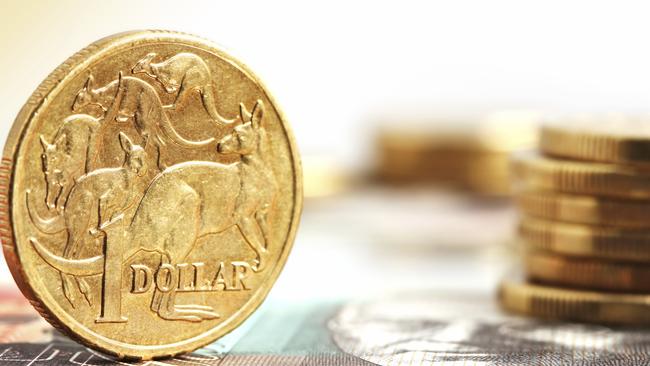Maple-Brown Abbott warns sharp decline in Aussie dollar not priced in ahead of ASX reporting season
The weak Australian dollar could deliver sharp misses from retailers and other importers this earnings season, but could underpin a financial windfall for some others.

Business
Don't miss out on the headlines from Business. Followed categories will be added to My News.
A sharp decline in the Australian dollar has yet to be priced in this reporting season by markets, heightening the likelihood of earnings misses by retailers and importers unable to implement price rises, boutique fund manager Maple-Brown Abbott warns.
The depreciation in the dollar could however deliver bumper windfalls for those businesses with offshore operations such as US tech companies, as well as gold miners benefiting from bullion prices above $4000 in the local currency.
Maple-Brown Abbott Australian Smaller Companies fund co-portfolio manager Matt Griffin said this reporting season would have plenty of hits and misses with markets homing in on stock specific stories and how companies are mitigating potential headwinds heading into 2025.
Over the last quarter the Australian dollar is down 9 per cent, around 6c to the US dollar, which Mr Griffin said has not been reflected in consensus numbers for most stocks.
He added the Australian dollar is a key factor that markets have yet to price in and will need to be closely watched this earnings season.
“Sell-side estimates always become a bit stale at the start of the year, as analysts haven’t updated their number for several weeks during the holiday season. As a result, consensus is still using US67c-US68c in a lot of their assumptions,” he said.
The depreciation has been fuelled by offshore factors, including China’s sluggish economy and concern that US President Donald Trump’s trade policies could lead to stronger US growth, higher inflation and, subsequently, higher interest rates, all of which contribute to a stronger US dollar.

A weaker Australian dollar means the cost of imported goods goes up and hurt margins if the businesses did not increase the price of goods. Many importers hedge their currency exposure which can delay that impact for six months to one year.
“These companies will need to put through a material price rise to offset the currency impact, but this will be particularly difficult in the current environment given the cost-of-living pressures. It will be something to watch this earning season,” Mr Griffin said.
The dollar was buying US62.85c on Friday after it fell to a five-year low of US61.32c earlier this month. The dollar has lifted slightly since President Trump delayed trade tariffs and instead ordered a broad review of US trade policy, with findings expected by April.
Mr Griffin said he was relatively downbeat on the retail market as while the top line was holding out for retailers, it hasn’t been enough to offset margin factors, which has been driven by discounting over the past several months, coupled with wage and rent rises.
“Overall, we think the market is too optimistic on margins for many retailers this reporting season. We have seen Premier and Myer this month have big earnings downgrades, despite revenue holding up reasonably well,” he said.

“We are expecting some downside margin surprise from some retailers this earnings season, but again it will be down to those stock specific stories.”
The threat of a weak dollar to the bottom line of corporations comes as economists warn it could force the Reserve Bank to delay interest cuts if it resulted in an upward spike in inflation. AMP chief economist Shane Oliver said imports account for between 10 to 15 per cent of the (consumer price index).
“It means every fall in the Aussie dollar by 10 per cent adds 0.1 to 0.15 per cent to inflation,” he said.
“If it keeps falling from here – say 20 per cent since the start of 2024 – it could have an impact on the RBA’s decision.”
The deterioration in the dollar was expected to be a win for companies with offshore operations this reporting season. Mr Griffin said for US tech companies listed on the ASX including Pro Medicus and Life360, he expected to see earnings upgrades in AUD terms as they benefit from the strong US dollar.
The portfolio manager said Australian gold miners are also likely to benefit from the currency moves.
“The Australian gold price is now over $4000 per ounce, meaning there is plenty of margin for domestic miners. However even with the rise in gold prices, specific stock selection is essential,” he said.
The depreciation of the Australian dollar would also be a positive for potential mergers and acquisitions from offshore players with the valuation of companies in Australia now 10 per cent cheaper than it was last quarter for a US private equity firm or corporate acquirer.
“We expect more M&A activity this year. A great example of this is the bidding war over Insignia Financial,” Mr Griffin said.
More Coverage
Originally published as Maple-Brown Abbott warns sharp decline in Aussie dollar not priced in ahead of ASX reporting season





